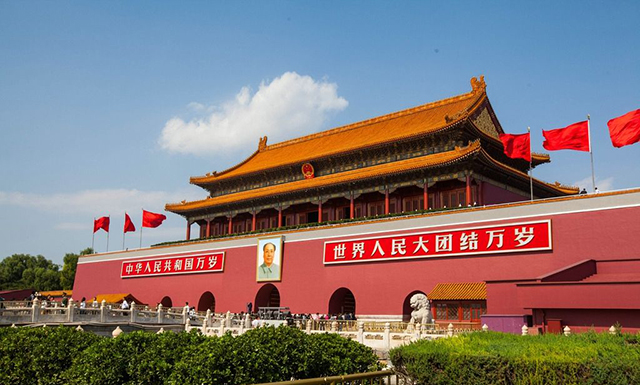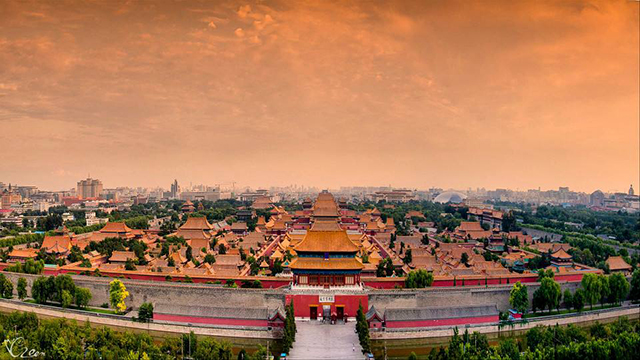Beijing is the political and cultural center of China and the capital of China. Beijing is one of the 10 Most Famous Cities in China.As the most mysterious country in the East, China has a long history of 5,000 years, and Beijing, as a famous city with a history of more than 3,000 years, has great historical and modern significance. Understanding Beijing is the beginning of your understanding of Chinese culture. Today, I will introduce what you need to know about beijing.
Many foreign friends are full of curiosity about Beijing, and a lot of information is also derived from incomplete fragments on TV, or even negative fragments, which are not correct. To understand a city, we must start with its history, culture, politics, economy and other aspects. As a historical and cultural city, Beijing shows modern people youth, vitality, modernity and civilization. When you go deeper, you will find that Beijing should be like Beijing.

1.History and Modernity of Beijing
Origin of Beijing Name
This ancient capital with more than 3,000 years of history has different titles in different dynasties. In the history of China, the name of Beijing has undergone many changes such as Yandu, Youzhou, Jingcheng, Nanjing, Dadu, Peiping, Beijing, Jingshi, Jingzhao and so on. Until the founding of New China, it was redefined as Beijing.
Administrative Divisions of Beijing
As of 2019, Beijing has a total of 16 municipal jurisdictions, namely Dongcheng District, Xicheng District, Chaoyang District, Fengtai District, Shijingshan District, Haidian District, Shunyi District, Tongzhou District, Daxing District, Fangshan District, Mentougou District, Changping District , Pinggu District, Miyun District, Huairou District, Yanqing District. Beijing Municipal People’s Government is located at No. 57 Yunhe East Street, Tongzhou District.
Geographical Environment of Beijing
Beijing is located at 115.7 ° -117.4 ° east longitude, 39.4 ° -41.6 ° north latitude, the center is located at 39 ° 54′20 ″ north latitude, 116 ° 25′29 ″ east longitude, with a total area of 16410.54 square kilometers. It is located in the northern part of the North China Plain, adjacent to the Bohai Bay, on the Liaodong Peninsula, and on the Shandong Peninsula. Beijing is adjacent to Tianjin and is surrounded by Hebei Province together with Tianjin.
Population of Beijing
At the end of 2019, the city’s permanent population was 21.536 million, a decrease of 0.6 million from the end of the previous year. Among them, the urban population is 18.65 million, accounting for 86.6% of the permanent population; the permanent population of foreign residents is 7.456 million, accounting for 34.6% of the permanent population. The birth rate of the permanent population is 8.12 ‰, the mortality rate is 5.49 ‰, and the natural growth rate is 2.63 ‰. The resident population density is 1,312 people per square kilometer, which is one person less than the end of last year.
Medical and Health in Beijing
At the end of 2019, there were 11,311 medical and health institutions, an increase of 211 from the end of the previous year; among them, 733 hospitals. There are 126,000 beds in medical institutions, an increase of 22,000; among them, 118,000 are in hospitals. There are 282,000 health technicians, including 100,000 practicing (assistant) physicians and 122,000 registered nurses. The total number of diagnoses and treatments in medical institutions was 604.434 million, an increase of 5.2% over the previous year. The annual incidence of Class A and B infectious diseases was reported to be 138.69 / 100,000 and the mortality rate was 0.87 / 100,000. The infant mortality rate was 1.99 ‰, and the maternal mortality rate was 2.96 / 100,000.
Science and Technology in Beijing
The number of patent applications and grants in 2019 was 226,000 and 132,000, respectively, an increase of 7.1% and 6.7% over the previous year. Among them, the number of invention patent applications and grants were 130,000 and 53,000, an increase of 10.4% and 13.1%, respectively. At the end of the year, there were 284,000 valid invention patents, an increase of 17.8%. A total of 83,171 technical contracts were signed during the year, an increase of 0.8%; the total value of technical contracts was 569.53 billion yuan, an increase of 14.9%.
People’s Life of Beijing
In 2019, the annual per capita disposable income of the city’s residents was 67,756 yuan, an increase of 8.7% over the previous year; after deducting the price factor, the actual increase was 6.3%. From the perspective of the four income components, the per capita wage income of residents is 41214 yuan, an increase of 9.4%; the net income of operating per capita is 1201 yuan, which is the same as the previous year; the net income of per capita property is 11257 yuan, an increase of 6.1%; 9.5%.
The annual per capita consumption expenditure of the city’s residents was 43,038 yuan, an increase of 8.0% over the previous year.
2.Visiting Beijing(Traveling in Beijing)
Things you should know before traveling in Beijing.
Beijing is a super-large city and the political center of China. Beijing has a history of more than 3,000 years and is a famous historical and cultural city. In many dynasties in ancient China, Beijing was regarded as the capital and political and economic center, so Beijing has great significance in Chinese history and modern times.
When it comes to visiting Beijing, I have to mention the largest palace group in the world: the Forbidden City

This palace was established in the Ming Dynasty of China. At that time, it was still a monarchy. Due to the relocation of capital from Nanjing, Emperor Mingchengzu Yongle established a huge palace in Beijing as the center of the country. The establishment of this palace took 14 years of history, and later the historical changes. In the Qing Dynasty, the Forbidden City was also regarded as its own royal palace and improved.
The Forbidden City in Beijing is built on the basis of the Nanjing Forbidden City. It is a rectangular city, 961 meters long from north to south, 753 meters wide from east to west, surrounded by a 10-meter-high city wall on all sides, and a 52-meter-wide moat outside the city. The Forbidden City is centered on three major palaces, covering an area of 720,000 square meters, with a construction area of about 150,000 square meters. There are more than 70 palaces and more than 9,000 houses.
| Chinese Name | 北京故宫 | Year | Ming and Qing Dynasties |
| Area | 720,000 square meters(The construction area is about 150,000 square meters) | Attraction level | National AAAAA tourist attraction |
| Protection Level | World Cultural Heritage, the first batch of national key cultural relics protection units | Nickname | Forbidden City |
| Ticket Price | 60 yuan high season / 40 yuan low season | Opening hours | 4.1-10.31: 08: 20-17: 00; 11.1-3.31: 08: 30-16: 30; closed every Monday |
You can get more information by visiting the official website of the Palace Museum:https://en.dpm.org.cn/
Another must-see attraction when visiting Beijing is the Badaling Great Wall.
The Great Wall, also known as the “Great Wall of China”, is a military defense project in ancient China. It is a tall, sturdy wall that restricts the movement of the enemy. The Great Wall is not a purely isolated city wall, but a defensive system with the city wall as the main body, combined with a large number of cities, barriers, pavilions, and landmarks.
The history of the Great Wall architecture can be traced back to the Western Zhou period, and all dynasties have been building or improving. After the Qin Dynasty unified the world, Qin Shihuang connected and repaired the Great Wall of the Warring States Period, known as the Great Wall of China. The Ming Dynasty was China’s last dynasty that overhauled the Great Wall. Today, most people see the Great Wall built at that time.
The Badaling section of the Great Wall of Ming Dynasty was called “Yuguan Heavenly Pass” and was one of the eight scenic spots of Juyongguan in the Ming Dynasty. The Badaling Great Wall is the earliest section of the Ming Great Wall open to tourists. The Badaling Scenic Area is dominated by the Badaling Great Wall. The Badaling Hotel and the China Great Wall Museum, which was autographed by President Jiang Zemin, and other modern tourist facilities with full functions.
| Chinese Name | 八达岭长城 | Attraction level | AAAAA level |
| English Name | Badaling Great Wall | Scenic area type | Character landscape |
| City | Yanqing District, Beijing | Famous tourist spot | Chadao cheng |
| Ticket price | 40 yuan in peak season, 35 yuan in low season, half price for students | Suitable for play | Season April, May, September, October |
You can visit the official website of Badaling Great Wall for more tourist information: http://www.badaling.cn/language/en.asp
The Summer Palace is an imperial garden built during the Qing Dynasty, and it is one of the must-see destinations when visiting Beijing.
The Summer Palace is located in the western suburbs of Beijing, 15 kilometers away from the city, covering an area of about 2.9 square kilometers, and adjacent to the Old Summer Palace.
The Summer Palace draws on the design methods of Jiangnan Gardens. It is a large-scale landscape garden and the most well-preserved royal palace. It is known as the “Royal Garden Museum” and is also a national key tourist attraction.
| Chinese Name | 颐和园 | Attraction level | AAAAA level |
| English Name | The Summer Palace | Scenic area type | Humanities landscape, historical landscape |
| City | Haiding district, Beijing | Construction time | Fifteen years of Qianlong (1750) |
| Ticket price | 30 yuan (peak season), 20 yuan (low season), half price for student tickets | Opening hours | 6: 30-18: 00 (peak season), 7: 00-17: 00 (low season) |
You can visit the official website of the Summer Palace to learn more: http://www.summerpalace-china.com/English/index.htm